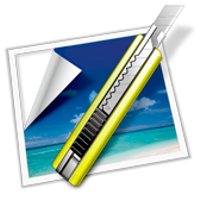Yes, it may make your screen look a little orangey at night and this may take a few minutes of getting used to, but it's well worth it.
The developers behind f.lux have collected research on how using f.lux can benefit your sleep and this can be found here.
However, to summarise the research listed, it is claimed that "blue light in the morning" treatment is a popular treatment for people with sleeping disorders. F.lux allows for this by increasing the color temperature at sunrise.
It is also agreed that it is best to avoid blue light within two hours of sleep. This is because it is commonly thought a high color temperature at night prevents us from sleeping for "roughly an hour and sometimes more".
Furthermore, f.lux prevents eye strain as warmer colors are far less harmful to eyes late at night.
It's very possible to see these effects yourself.
After you've downloaded f.lux and set it up, which takes all of a few minutes, you simply have to sit and wait.
Once it's been a few hours past sunset and your screen has changed to a much warmer color, disable f.lux.
I've yet to see anyone not be shocked as to how bright their screen now becomes and since then anyone I've known to use it has continued to do so - and you should too.






 Microsoft Reveals New Next-Gen Console: Xbox Oneon 05/21/2013
Microsoft Reveals New Next-Gen Console: Xbox Oneon 05/21/2013
 Duolingo - Learn A New Language Easily And Entirely Freeon 04/03/2013
Duolingo - Learn A New Language Easily And Entirely Freeon 04/03/2013
 How Ghost Pictures Can Be Fakedon 01/28/2013
How Ghost Pictures Can Be Fakedon 01/28/2013
 How To Create And Install GIMP Brushes For Beginnerson 01/28/2013
How To Create And Install GIMP Brushes For Beginnerson 01/28/2013



Tell Us About Your f.lux Experiences!
I will probably give that a try, Paul. Thanks. But not right now. Ha ha.
I've seen extensions for Google Chrome that pop up a little message saying that it's time to look away which may be of use to you? It's http://bit.ly/SXIDOC if you're interested. I used to use it but to be honest it got to a point where it annoyed me and I was just ignoring it...
I've tried the "looking at something far away every 20 minutes I'm on the computer" but it doesn't work. Mainly because by the time I remember to look away at something in the distance 2 hours have gone by. I guess I could set an alarm for every 20 minutes, eh?
Glad to see immediate benefits! It might also be worth taking a 20 second break every 20 minutes by looking at something far away - I'm led to believe that this somewhat alleviates your eyes' focus on an object that's close.
Paul, I've only been using it a couple of hours, but usually when I come away from the screen for a short period, it takes me ages to adjust to looking 'distance' if that makes sense? I'm usually rubbing my eyes and have to wait a minute or so to focus properly. I'm not having to do that at the moment, first time in a long time. I've tweeted this, it's brilliant.
Glad to see it's already showing some signs of improvement, Hollie! and turning down the brightness will certainly help, but it isn't the same as what f.lux does. Changing the brightness doesn't change the color temperature of the screen - a lower brightness just makes it seem less "sharp" on the eyes.
Personally if it's late at night I have my brightness low and f.lux also enabled and it helped me as I used to get terrible headaches in the morning if I'd been on my laptop late at night.
I have a question: I use a Mac which can be calibrated to automatically adjust brightness as ambient light changes. Isn't this the same thing?
Thanks for this info, Paul. You have just helped a bunch of us.
Fantastic, I've just downloaded it. It's a strange colour but I'm not squinting when I look at the screen. Thanks for this info, Paul.
Haha, glad I could help! :)